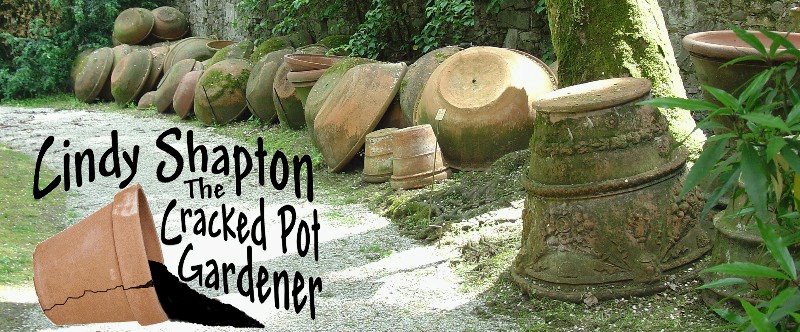 It seems that many tomatoes have been splitting this summer according to gardeners everywhere or at least those here in Middle TN. With the weather inconsistencies this year the norm has been stretched and vegetables are apparently confused. I feel like splitting myself some days to somewhere cooler, oh wait that happens every summer in the south.
It seems that many tomatoes have been splitting this summer according to gardeners everywhere or at least those here in Middle TN. With the weather inconsistencies this year the norm has been stretched and vegetables are apparently confused. I feel like splitting myself some days to somewhere cooler, oh wait that happens every summer in the south.Okay so why all the cracking and splitting? Really, consistent water is an issue for the vegetable garden. This gardening season has been dry periods followed by heavy rains. This is tough on tomatoes especially during the early stages. Rapid grow occurs which can cause splits. It usually doesn’t happen to the whole crop and some varieties tend to crack-up more than others.
 The Vegetable garden in general needs about an inch per week to maximize production and prevent problems like splitting tomatoes. Soaker hoses or drip irrigation are better than overhead methods. However if you have only sprinklers to work with water in the mornings so the leaves have plenty of time to dry out and water for a longer period of time every 4-7 days (depending on temperatures and drying winds) rather than a little every day. The plants will appreciate the longer less frequent drinks and their roots will grow deeper into the earth making them more sustainable and stronger when the heat gets turned up or winds knock them about.
The Vegetable garden in general needs about an inch per week to maximize production and prevent problems like splitting tomatoes. Soaker hoses or drip irrigation are better than overhead methods. However if you have only sprinklers to work with water in the mornings so the leaves have plenty of time to dry out and water for a longer period of time every 4-7 days (depending on temperatures and drying winds) rather than a little every day. The plants will appreciate the longer less frequent drinks and their roots will grow deeper into the earth making them more sustainable and stronger when the heat gets turned up or winds knock them about.Mulch helps to keep weeds out and moisture in. Straw, hay, newspapers or leaves make great mulch for the kitchen garden.
Blossom End Rot is another common issue with tomatoes. The bottom of the fruit is brown to black with a moldy and gross look. A lack of calcium seems to be the reason and there are many thoughts as to why this happens. In my kitchen garden I usually have a few (BERs) in the beginning of the season and I think it is because I use rich compost from horse poop which causes
 quick acceleration in growth. Because of the high level of nitrogen the calcium needed isn’t available until more of the nitrogen breaks down. (Like I mentioned, my theory)
quick acceleration in growth. Because of the high level of nitrogen the calcium needed isn’t available until more of the nitrogen breaks down. (Like I mentioned, my theory)Another reason can be heavy rains which dilutes the calcium and other minerals available in the soil. I have read that plants exposed to extreme conditions in the greenhouse or at the nursery can add to this problem of Blossom End Rot.
To help prevent BER it is always a good idea to buy good plants or start your own. Do everything possible to have good garden soil with lots of organic matter and the proper pH. Water consistently and rotate crops every couple of years.
I have heard it helps to add egg shells to the soil at planting time to give a bit of a calcium boost or spray young plants with a calcium solution.
Blossom End Rot is not partial to tomatoes and many other veggies can have this problem. This year I had a couple of peppers, squash and even some okra with BER symptoms. For me in my garden it all disappears quickly before I have time to think or do anything about it giving me more time to focus on how in the world we are going to eat all these tomatoes!


No comments:
Post a Comment